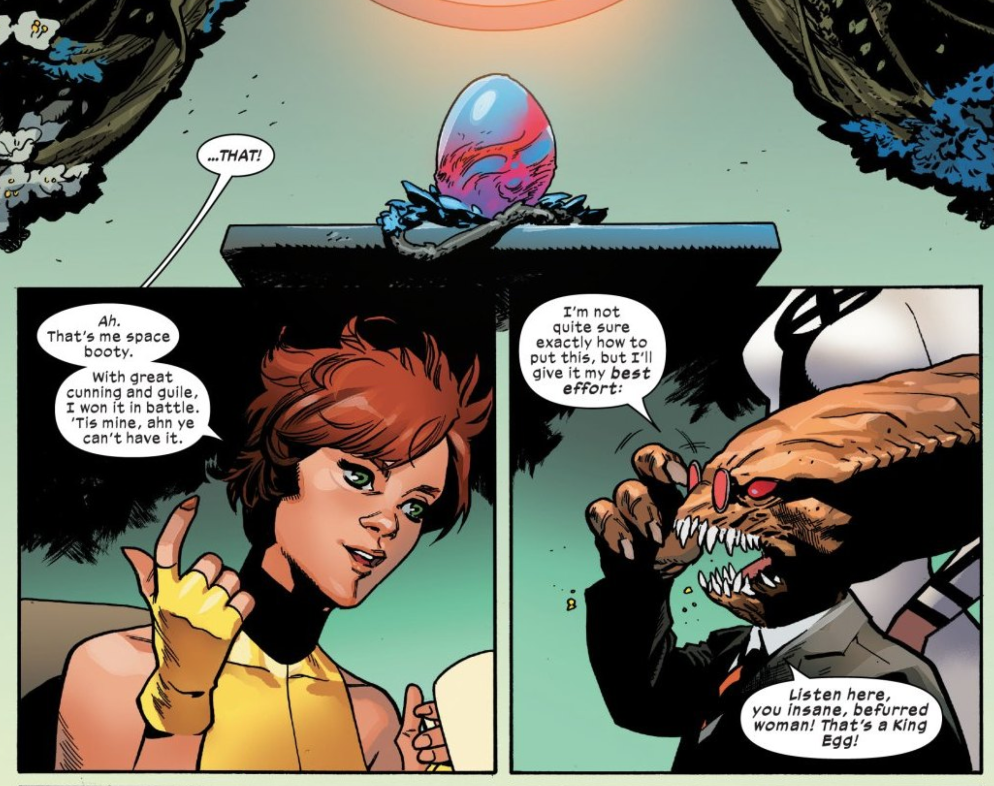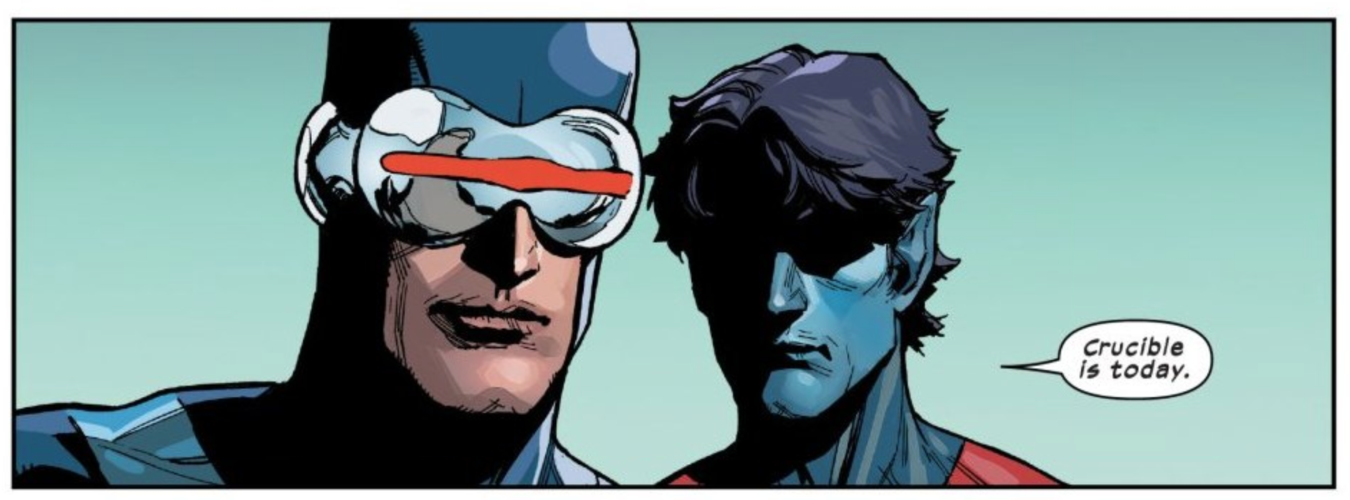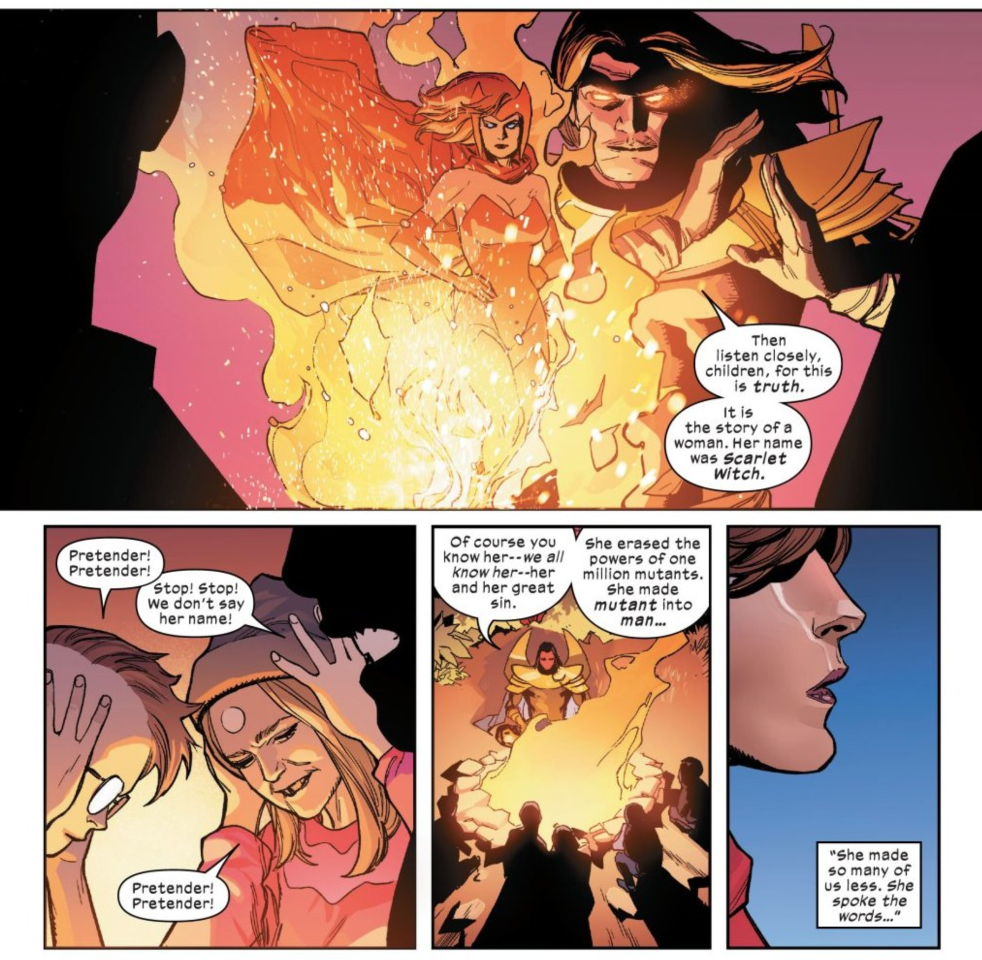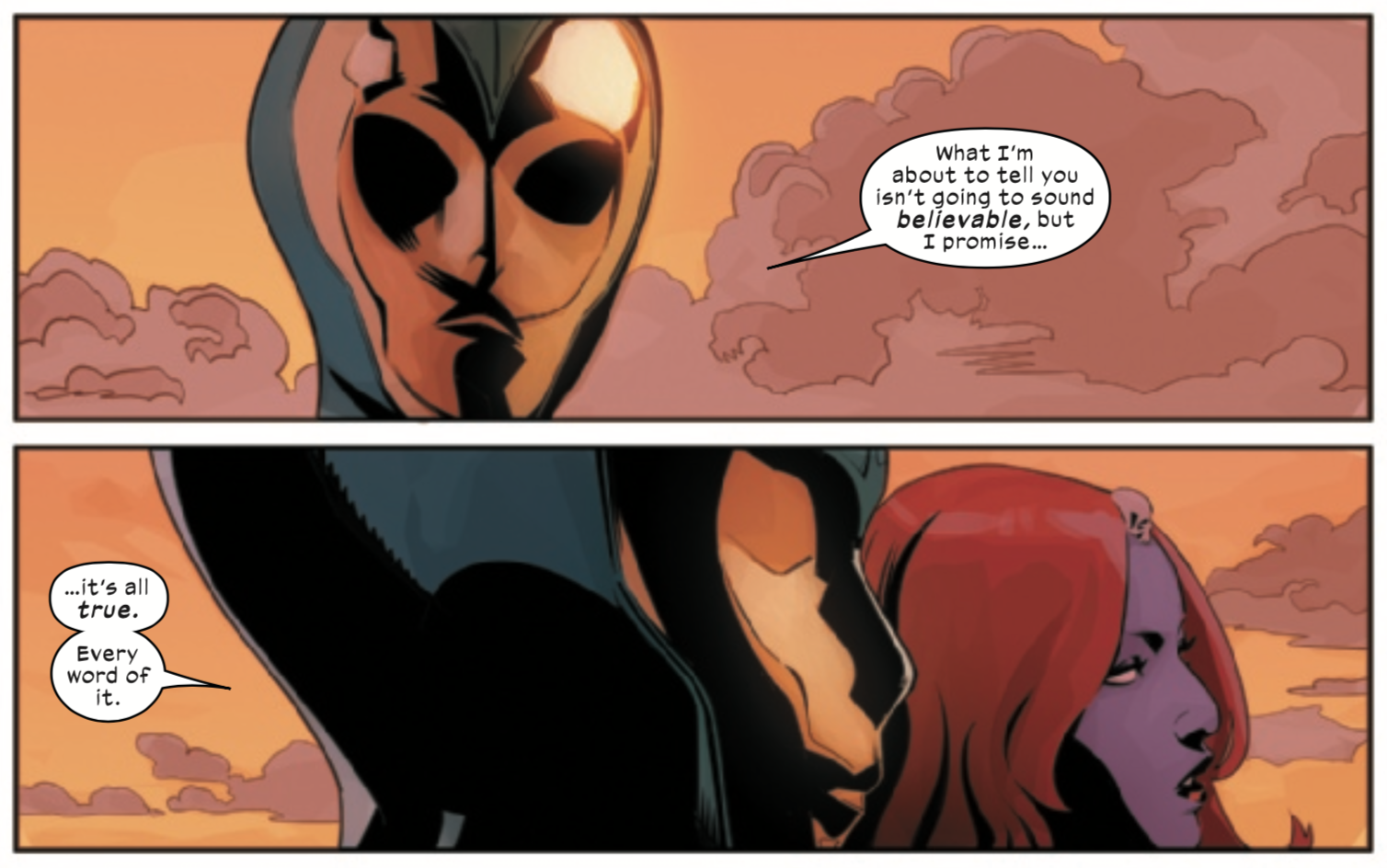Swarm
“Swarm”
Written by Jonathan Hickman
Art by Mahmud Asrar
Color art by Sunny Gho
“Swarm” picks up where Jonathan Hickman left off with his brief run on New Mutants, with that group back on Krakoa and in possession of an egg that Wolfsbane stole and brought home with her just for kicks. As it turns out, it’s a Brood king egg and the Brood have tracked it back to Earth, and are invading Krakoa in swarms. It’s the most conventional story Hickman has done so far in the main X-Men book, but it’s advancing his larger space opera macro plot and delivering a jolt of action film energy that the series has been light on amidst the more philosophical focus of recent issues.
If you are new to all this, you should know that the Brood are an alien race that Chris Claremont and Dave Cockrum introduced in the early ‘80s and are rather transparently the Marvel version of the xenomorphs from the Alien franchise. Hickman’s use of the Brood emphasizes the creepy otherness of the species, particularly in the scenes of the issue in which we observe teeming masses of Brood crawling through the husks of the space whales they use as organic spaceships. Mahmud Asrar, a familiar X-Men artist of the recent past who fills in for Leinil Yu on this issue, is particularly good at drawing the creatures in action sequences in which they’re still quite scary even as Cyclops, Magik, and Mirage wipe them out.
I’ve never been particularly fond of the Brood, but Hickman and Asrar make me rethink my position on them as a threat. They emphasize just enough of what makes them distinctive to keep it from feeling such a blatant Alien rip-off while nailing the coolest visual aspects of “what if the X-Men fought a thousand xenomorphs?”
This is the first traditional multi-part story of Hickman’s run so I’m going to hold off writing about the bigger story, so let’s move straight to notes…
• Vulcan features heavily in this issue, and will be central for at least another two issues going on the covers for those comics. Vulcan is a very complicated character – he’s the biological brother of Cyclops and Havok, but was raised in Shi’ar space and has a complicated backstory that involves both the history of Krakoa and a Marvel cosmic event by Dan Abnett and Andy Lanning that I never read called War of Kings in which Vulcan, leading the Shi’ar, clashed with Black Bolt of the Inhumans leading the Kree. Hickman calls back to that story in this issue with a text page recapping the ending of War of Kings, in which Black Bolt and Vulcan are lost in the Fault, a rip in the fabric of time and space. This page is followed by a page of Vulcan lost in the Fault which directly echoes a page from Hickman’s FF #6 in which Black Bolt is lost in the Fault.
I’m a lot more intrigued by Vulcan’s connection to the history of Krakoa, which was introduced as a massive retcon in Ed Brubaker’s Deadly Genesis miniseries. In this issue we see Vulcan after getting wasted with Petra and Sway, two recently resurrected mutants who were part of a failed second iteration of the X-Men that Moira McTaggert and Charles Xavier sent to Krakoa before the assembling the third wave of X-Men including Storm, Wolverine, Nightcrawler, and Colossus from Giant Size X-Men #1. This is a crucial element of the Krakoa story that Hickman has yet to address – like, what does the Krakoa we know from House of X onward have to do with the hostile monster island from the first modern X-Men comic? What was the early process of getting Krakoa the sentient being on board with being Krakoa, the mutant nation? And how do Petra and Sway feel about living on Krakoa when Krakoa murdered them?
• Perhaps the greatest flex of Hickman’s X-Men thus far is making two of the most annoying characters from Jason Aaron’s awful Wolverine and the X-Men run, the cutesy Brood mutant named Broo and Kid Gladiator, tolerable in their appearances in this issue. He doesn’t really do much to change either character – Broo is basically still a baby monster who’s always like “indubitably!” and Kid Gladiator is still a child version of Gladiator who is always like “RAD!” – but they’re both a lot less aggravating in this context than in Aaron comics where it seems like he was rather convinced they’re the most hilarious things in the world. Broo, always a novelty character up to now, has a clear utility in this issue’s plot too. It goes a long way.
• Always a pleasure to get even just a page of Hickman’s Sunspot!



























